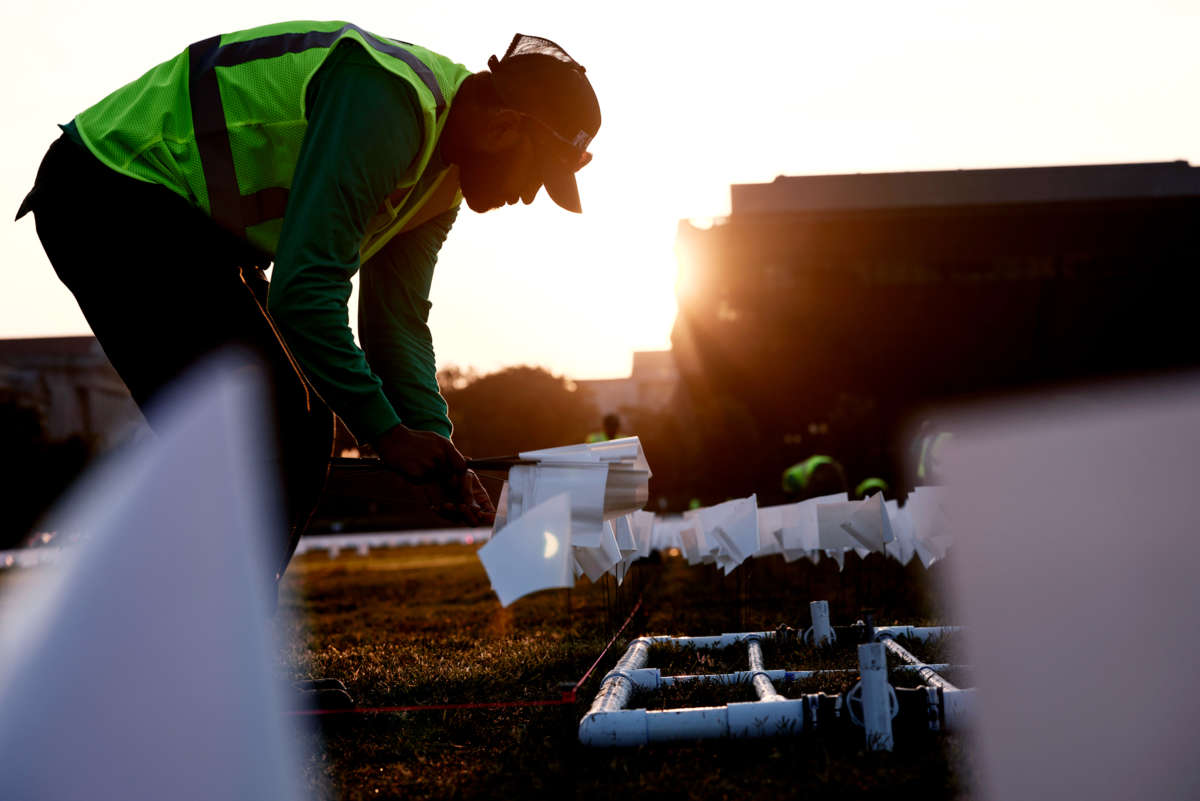As COVID cases spike yet again in the U.S., the country has reached another somber milestone in its fight against the pandemic. Since the first reported case in the U.S., 1 in 500 Americans has died from COVID-19.
According to analysis by CNN, and citing data from Johns Hopkins University, as of Tuesday night, there have been 663,913 deaths due to COVID in the U.S. The U.S.’s population is approximately 331 million, according to the Census Bureau. The milestone comes just weeks after the country hit a new peak in COVID hospitalizations, with over 100,000 hospitalized over a two-week average at the end of August.
COVID infections and deaths were on the rise since the beginning of July, after a period when cases appeared to be tapering off early in the summer. According to the New York Times’s COVID tracker, over the past two weeks, infections and deaths across the country have been trending very slightly downward again on average. But as cases are still on the rise in states like Ohio and Minnesota, public health officials are warning against complacency, saying that cases and deaths could begin to rise again at any point.
Vaccination rates have largely plateaued since the original rush to get shots in arms in the spring. Across all age groups, including those that aren’t eligible to be vaccinated, only 54 percent of the country is fully vaccinated. Among those eligible, 63 percent are fully vaccinated, according to the New York Times’s vaccine tracker.
As children return to in-person schooling, and since those under 12 years of age still can’t be vaccinated against COVID, children have made up a large share of the current infections across the country. Data released by the American Academy of Pediatrics last week showed that, in the week ending September 9, 28.9 percent of reported cases in the U.S. were among children. This means that children were disproportionately represented in COVID cases; according to the Census Bureau, children make up about 22.2 percent of the U.S. population.
However, there is hope that the case numbers may fall soon as new vaccine mandates go into place and as vaccine manufacturers prepare to expand age eligibility.
The CEO of Pfizer has said that the company will submit trial data on vaccinations in children between the ages of 5 and 12 to the Food and Drug Administration (FDA) as early as the end of this month, and it plans to release trial data on children between 6 months and 5 years old in late October. Rochelle Walensky, the director of the Centers for Disease Control and Prevention (CDC) said Monday that she hopes vaccines for children under 12 will be approved by the end of the year.
While approval for COVID vaccines for children is pending, new mandates may have a more immediate effect in suppressing cases. President Joe Biden announced a new executive order last week that will require all federal workers and federal contractors to be vaccinated, with no options to opt-out. The order also mandates that companies with over 100 employees must require vaccinations for their employees, or else they must be subjected to weekly testing.
With full FDA approval for the Pfizer vaccine last month, vaccine hesitancy also appears to be lightening up slightly. A poll released in late August found that only 20 percent of adults say that they won’t get vaccinated, down from 34 percent in March and 23 percent earlier that month. Experts also say that vaccine mandates are effective in getting more people vaccinated, so the new mandate from Biden may soon begin to have an effect.
Join us in defending the truth before it’s too late
The future of independent journalism is uncertain, and the consequences of losing it are too grave to ignore. To ensure Truthout remains safe, strong, and free, we need to raise $27,000 in the next 24 hours. Every dollar raised goes directly toward the costs of producing news you can trust.
Please give what you can — because by supporting us with a tax-deductible donation, you’re not just preserving a source of news, you’re helping to safeguard what’s left of our democracy.
